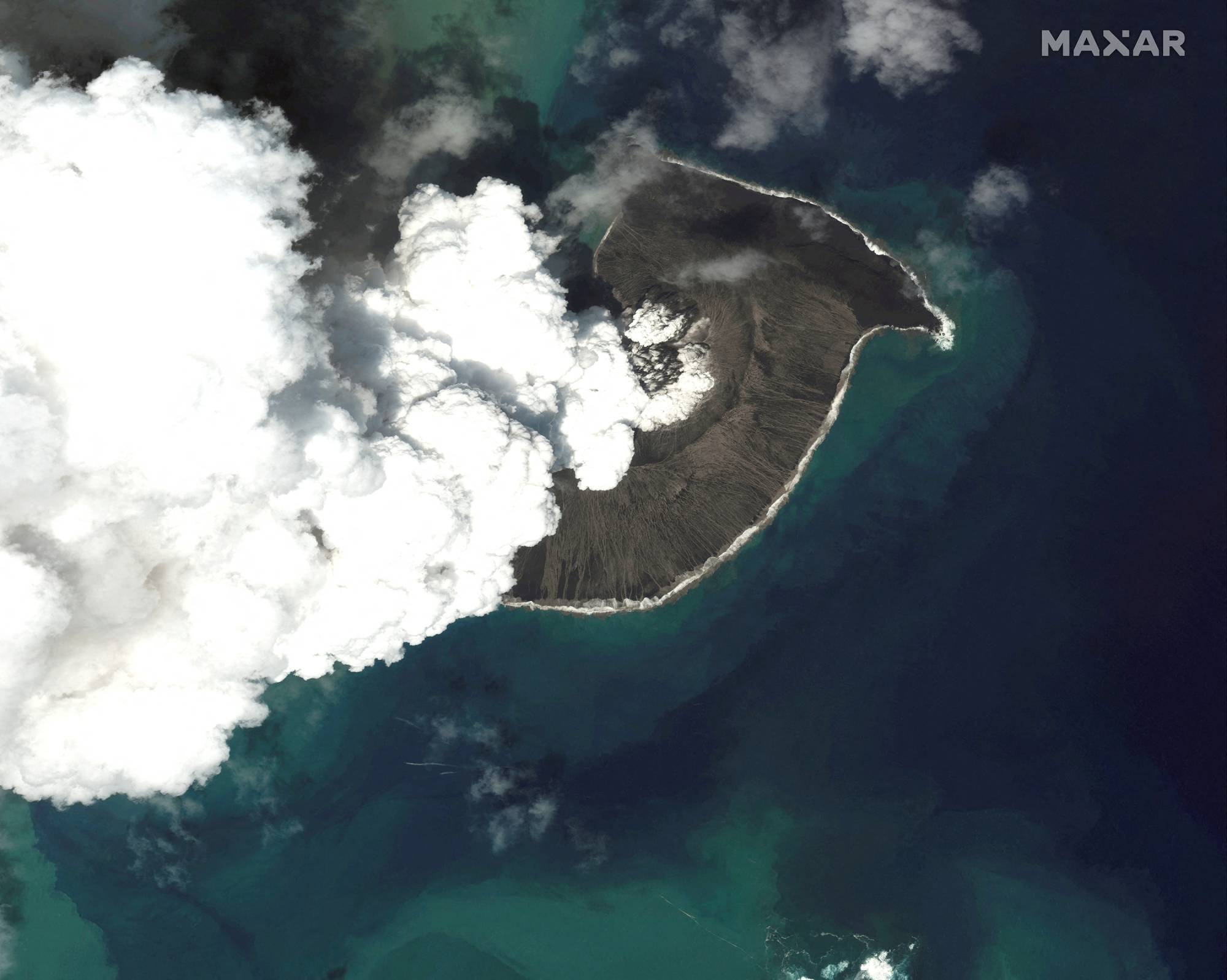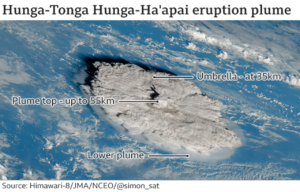Hunga eruption larger than any U.S. nuclear explosion

According to a study published in Science Advances, the 2022 eruption of the Hunga Tonga-Hunga Ha’apai undersea volcano was larger than any natural explosion in the past century or any US nuclear explosion.
The eruption was comparable in magnitude to the Krakatau volcanic explosion near Indonesia in 1883, which claimed over 36,000 lives.
The research team, using satellite data, field observations, and drone mapping, created a simulation of the eruption and resulting tsunami waves. They found that the tsunami waves reached heights of 45 metres on Tonga’s Tofua Island and up to 17 metres on Tongatapu, the country’s most populated island and site of its capital Nuku’alofa.
The study also showed why the tsunami was particularly damaging but how it could have been much worse. The eruption released the most water vapour into the atmosphere by a volcano on record, and it set a world record for the highest volcano plume in the satellite record, sending ash 58km high into the atmosphere. It also triggered the fastest atmospheric waves ever observed at 1160kph, circling the planet at least six times.
 The researchers estimate the strength of the last blast wave to be 15 megatons (equivalent to 15 million tons of TNT), larger than any nuclear tests performed by the United States. If one were theoretically at the center of the blast when it occurred, they would have been standing on dry seafloor.
The researchers estimate the strength of the last blast wave to be 15 megatons (equivalent to 15 million tons of TNT), larger than any nuclear tests performed by the United States. If one were theoretically at the center of the blast when it occurred, they would have been standing on dry seafloor.
The most powerful blast was created by seawater infiltrating into the hot magma and exploding, creating a steam-generated eruption.


